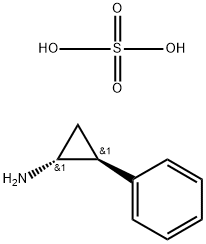13492-01-8

CHEMICAL AND PHYSICAL PROPERTIES
| Collision Cross Section | 127.2 Ų [M+H]+ [CCS Type: TW, Method: calibrated with polyalanine and drug standards] |
|---|
SAFETY INFORMATION
| Signal word | Danger |
|---|---|
| Pictogram(s) |
 Skull and Crossbones Acute Toxicity GHS06 |
| GHS Hazard Statements |
H300:Acute toxicity,oral |
| Precautionary Statement Codes |
P261:Avoid breathing dust/fume/gas/mist/vapours/spray. P264:Wash hands thoroughly after handling. P264:Wash skin thouroughly after handling. P280:Wear protective gloves/protective clothing/eye protection/face protection. P301+P310:IF SWALLOWED: Immediately call a POISON CENTER or doctor/physician. |
COMPUTED DESCRIPTORS
| Molecular Weight | 364.5 g/mol |
|---|---|
| Hydrogen Bond Donor Count | 4 |
| Hydrogen Bond Acceptor Count | 6 |
| Rotatable Bond Count | 2 |
| Exact Mass | 364.14567842 g/mol |
| Monoisotopic Mass | 364.14567842 g/mol |
| Topological Polar Surface Area | 135 Ų |
| Heavy Atom Count | 25 |
| Formal Charge | 0 |
| Complexity | 197 |
| Isotope Atom Count | 0 |
| Defined Atom Stereocenter Count | 4 |
| Undefined Atom Stereocenter Count | 0 |
| Defined Bond Stereocenter Count | 0 |
| Undefined Bond Stereocenter Count | 0 |
| Covalently-Bonded Unit Count | 3 |
| Compound Is Canonicalized | Yes |
PRODUCT INTRODUCTION
description
Tranylcypromine Sulfate is the sulfate salt form of tranylcypromine, an orally bioavailable, nonselective, irreversible, non-hydrazine inhibitor of both monoamine oxidase (MAO) and lysine-specific demethylase 1 (LSD1/BHC110), with antidepressant and anxiolytic activities, and potential antineoplastic activities. Upon oral administration, tranylcypromine exerts its antidepressant and anxiolytic effects through the inhibition of MAO, an enzyme that catalyzes the breakdown of the monoamine neurotransmitters serotonin, norepinephrine, epinephrine and dopamine. This increases the concentrations and activity of these neurotransmitters. Tranylcypromine exerts its antineoplastic effect through the inhibition of LSD1. Inhibition of LSD1 prevents the transcription of LSD1 target genes. LSD1, a flavin-dependent monoamine oxidoreductase and a histone demethylase, is upregulated in a variety of cancers and plays a key role in tumor cell proliferation, migration, and invasion.